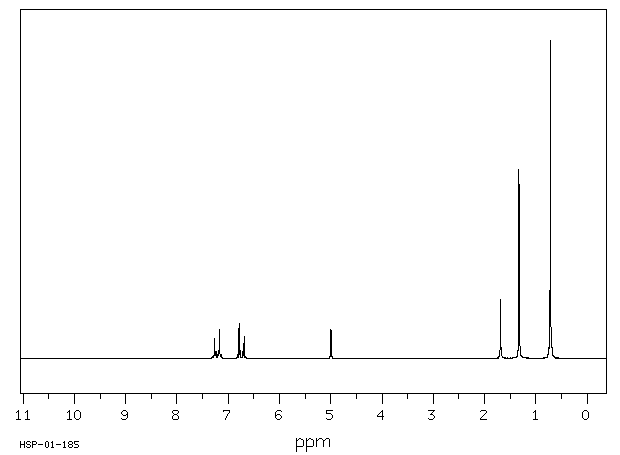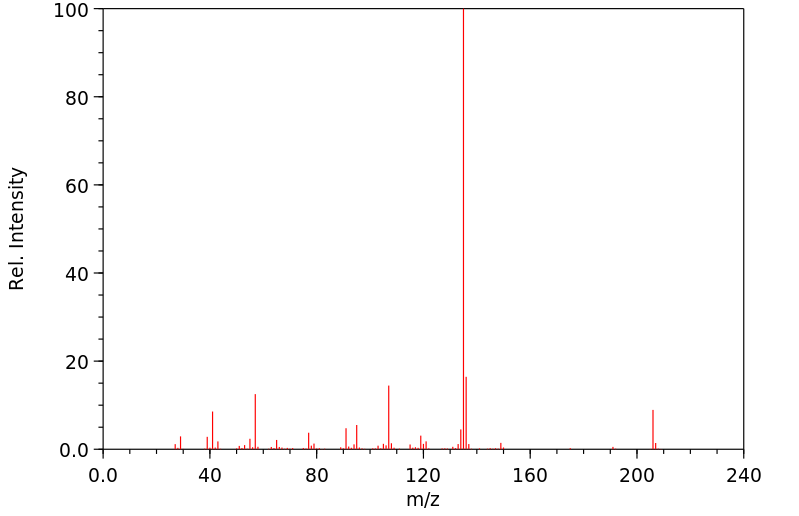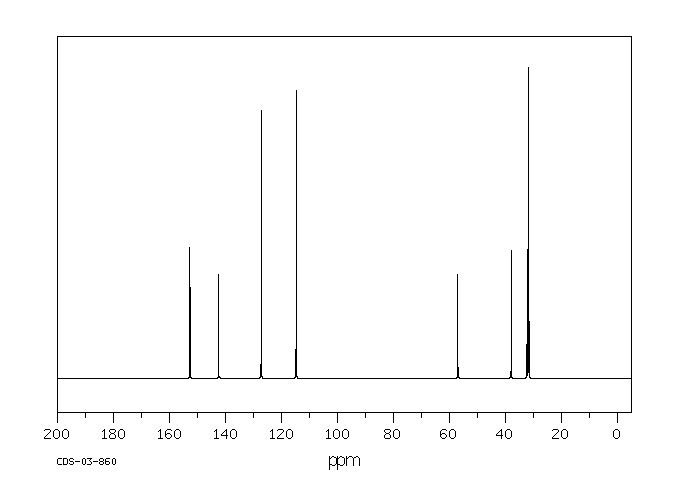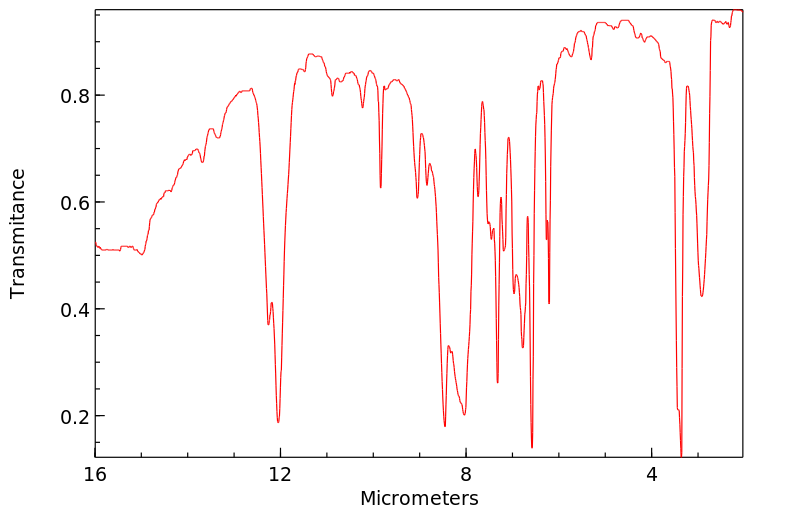代谢
4-叔辛基酚的代谢研究使用了雄性斯普拉格·道莱(SD)大鼠和Eisai高胆红素血症大鼠(EHBR)的肝脏灌注,使用含有0.05 mM 4-叔辛基酚的溶液。代谢物通过高效液相色谱(HPLC)和液相色谱/质谱(LC/MS)检测。本研究显示4-叔辛基酚通过羟基化随后与葡萄糖醛酸结合或仅与葡萄糖醛酸结合进行代谢。代谢物被鉴定为羟基-叔-4-叔辛基酚葡萄糖醛酸苷、羟基-叔-4-叔辛基酚、叔辛基儿茶酚葡萄糖醛酸苷、4-叔-4-叔辛基酚葡萄糖醛酸苷、4-叔辛基儿茶酚以及未改变的4-叔-4-叔辛基酚。葡萄糖醛酸苷被显示排入胆汁(占灌注底物的38%)并在SD大鼠的肝脏组织中检测到。在EHBR大鼠中,仅回收了32%的灌注4-叔辛基酚,其中几乎全部(约68%)在肝静脉中找到(而不是在胆汁或肝脏中)。在研究的第二部分进行了UDP-葡萄糖醛酸基转移酶(UGT)的测定。表达几种UDP-葡萄糖醛酸基转移酶(UGT1A1、UGT1A6、UGT1A7和UGT2B1)异构体的酵母细胞与4-叔辛基酚一起孵化。在这个测试中,只有UGT2B1异构体代谢了4-叔辛基酚,最大反应速率(Vmax)为11 nmol/min/mg,米氏常数(Km)为94 uM。在大鼠的肝脏、肾脏、肠道和睾丸的微粒体以及人肝微粒体中也测量了4-叔辛基酚的转化。肝脏(大鼠和人类)以及大鼠肠道显示出最高的转化率。Vmax和Km分别被确定为7.7、3.8和2.75 nmol/min/mg或57、24和125 uM。
Metabolism of 4-tert-octylphenol was investigated using liver perfusion in male Sprague Dawley (SD)rats and Eisai hyperbilirubinemic rats (EHBR) with a solution containing 0.05 mM 4-tert-octylphenol. Metabolites were detected using HPLC and LC/MS. In this study 4-tert-octylphenol was shown to be metabolized by hydroxylation and subsequent glucuronidation or glucuronidation alone. The metabolites were identified as hydroxyl-tert-4-tert-octylphenol glucuronide, hydroxyl-tert-4-tert-octylphenol, tertoctylcatechol-glucuronide, 4-tert-4-tert-octylphenol-glucuronide, 4-tert-octylcatechol unchanged 4-tert-4-tert-octylphenol. Glucuronides were shown to be excreted into the bile (38% of the perfused substrate) and were detected in liver tissue in SD rats. In EHBR rats only 32 % of perfused 4-tert-octylphenol were recovered almost all of which (approximately 68 %) was found in the hepatic vein (and not in the bile or the livers). In a second part or the study an UDP-glucuronosyltransferase assay was performed. Yeast cells expressing several isoforms of UDP-glucuronosyltransferase (UGT1A1, UGT1A6, UGT1A7, and UGT2B1) were incubated with 4-tert-octylphenol. In this test only the UGT2B1 isoform metabolized 4-tert-octylphenol with a Vmax of 11 nmol/min/mg and Km of 94 uM. Conversion of 4-tert-octylphenol was also measured in vitro in microsomes of liver, kidney, intestine and testis of rats as well as in human liver microsomes. Liver, rat and human, as well as rat intestine showed the highest conversion rate. Vmax and km were determined to be 7.7, 3.8 and 2.75 nmol/min/mg or 57, 24 and 125 uM, respectively.
来源:Hazardous Substances Data Bank (HSDB)










